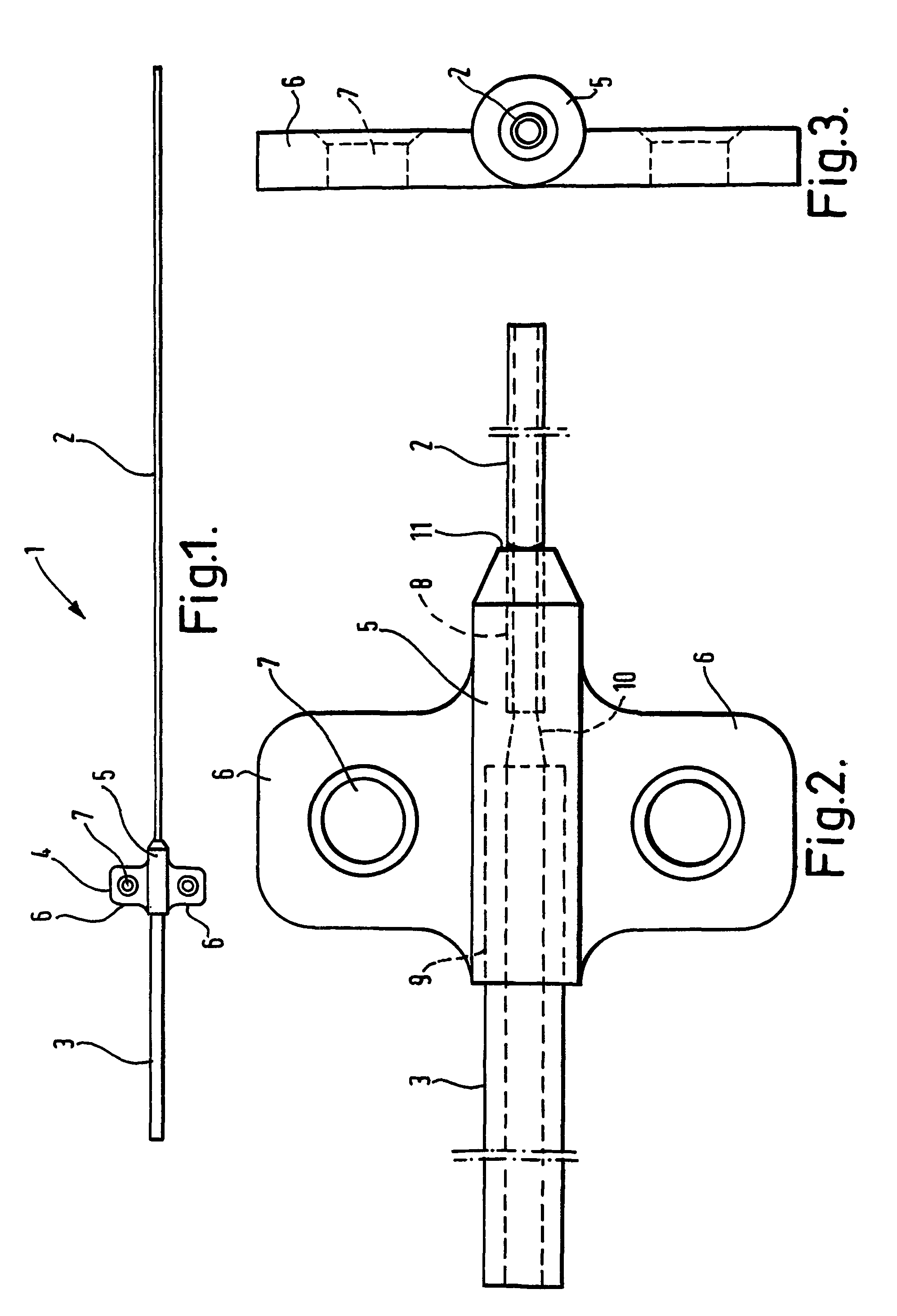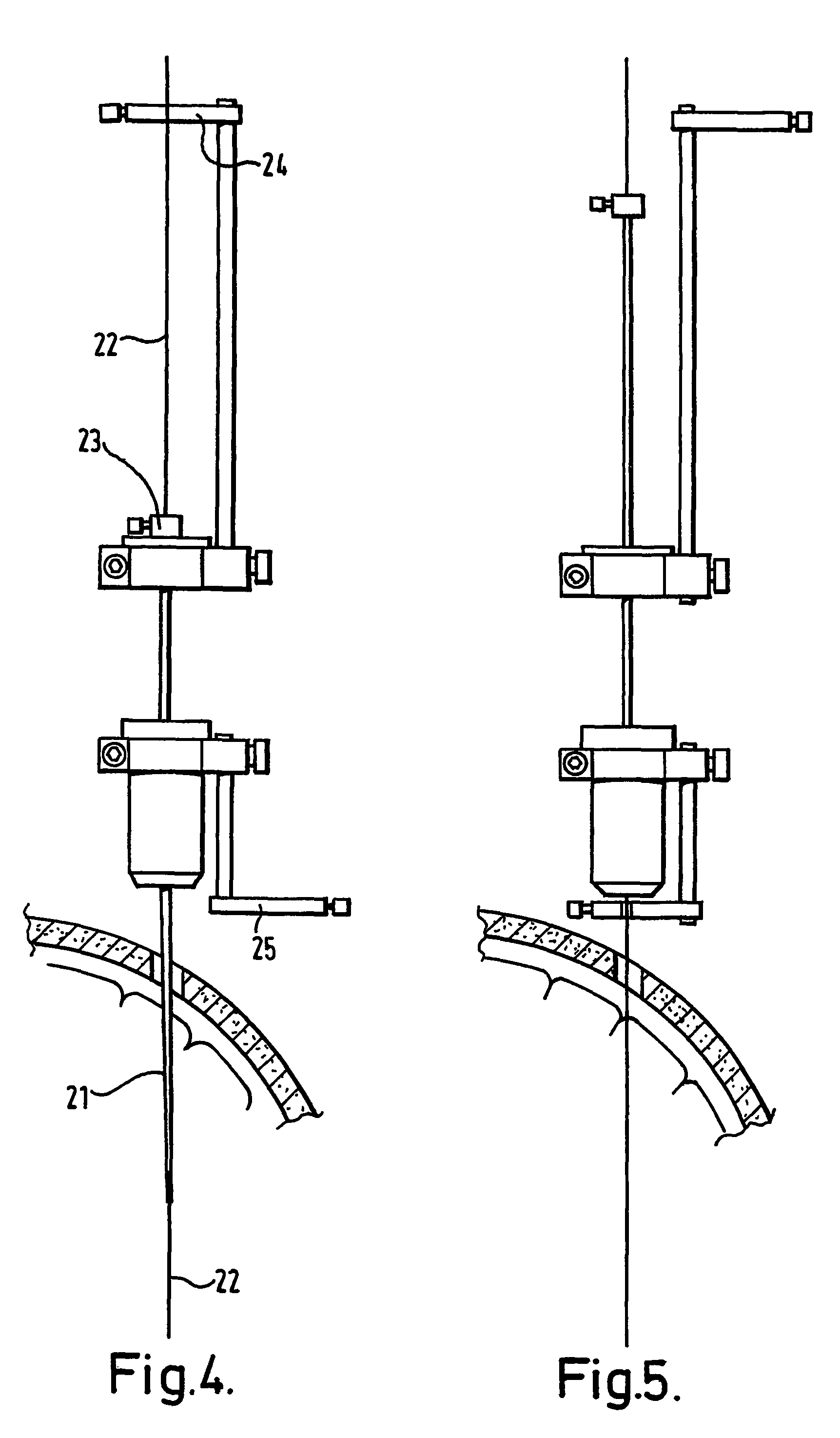Catheter and guide tube for intracerebral application
a guide tube and intracerebral technology, applied in the field of neurosurgical equipment positioning, can solve the problems of reducing the effectiveness of treatment, significant morbidity or treatment failure, and the number of difficulties encountered in such neurosurgical procedures, and achieve the effect of optimizing the placement of the catheter
- Summary
- Abstract
- Description
- Claims
- Application Information
AI Technical Summary
Benefits of technology
Problems solved by technology
Method used
Image
Examples
example 1
[0036]FIGS. 1,2 and 3 show a catheter 1 according to the present invention. The catheter 1 includes A length of fine tubing 2, the outer diameter which is no more than 1 mm, and most preferably no greater than 0.7 mm. It is even more preferred that the outer diameter be no more than 0.5 mm. In this instance, the catheter tubing 2 is constructed from polyurethane plastic and preferably from carbothane 55 DB20 (Thermedics Polymer Products, WOBURN MA, USA). The fine tubing 2 is linked to a length of connector tubing 3 having an outer diameter of about 2 mm, via a hub 4. The connector tubing 3 is, in this case, made from polyurethane plastic, such as carbothane 85AB20, although other materials could also be used.
[0037]The hub 4 in this case is also constructed using polyurethane, such as carbothane 72 DB20. Again, other materials may also be appropriate.
[0038]The fine tubing 2 is intended to be inserted into the brain of a patient, whereas the connector tubing 3 is intended to be connec...
example 2
[0041]The insertion of the catheter will now be described. Firstly, a stereotactic frame is attached to the patient's skull and the position of the intracranial target is identified by imaging the patient wearing the stereotactic frame and defining the position of the target as three dimensional co-ordinates. This step is explained in more detail in the introduction to this patent specification and is a standard technique within the field of neurosurgery.
[0042]Once the target has been defined, a stereoguide is used which is set to the target coordinates. An appropriately sized guide tube having an internal diameter of no more that 1 mm is directed into the brain in the direction of the target. The guide tube is arranged with a head at one end, which, once inserted, can be attached to the patient's skull, for example by being bonded into a burrhole in the skull using an acrylic cement.
[0043]Before insertion, the guide tube is cut to a length short of the target, and sufficiently shor...
example 3
[0047]In an alternative insertion technique, a number of phases or steps are taken which are shown in FIGS. 4 to 7. As will be appreciated, small diameter catheters have a tendency to drift off the planned trajectory during insertion as a result of the flexibility inherent in a small diameter instrument. Since neurosurgical targets are often deeply situated, typically 70-80 mm from the surface of the skull, and sometimes as much as 100 mm from the skull surface, the catheter must normally be very rigid, and therefore of a larger diameter.
[0048]Examples of possible targets include parts of the mesencephalon including the subthalamic nucleus, the substantia nigra and the pedunculor-pontine nucleus. This is a particularly critical region of the brain, where it is important to minimize trauma from the passage of an instrument, which is typically situated about 70-80 mm from the skull surface and contained within a volume which has a height of approximately 20-25 mm.
[0049]To facilitate i...
PUM
 Login to View More
Login to View More Abstract
Description
Claims
Application Information
 Login to View More
Login to View More - R&D
- Intellectual Property
- Life Sciences
- Materials
- Tech Scout
- Unparalleled Data Quality
- Higher Quality Content
- 60% Fewer Hallucinations
Browse by: Latest US Patents, China's latest patents, Technical Efficacy Thesaurus, Application Domain, Technology Topic, Popular Technical Reports.
© 2025 PatSnap. All rights reserved.Legal|Privacy policy|Modern Slavery Act Transparency Statement|Sitemap|About US| Contact US: help@patsnap.com



